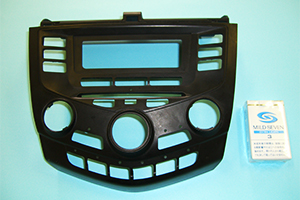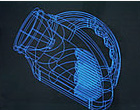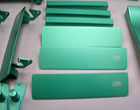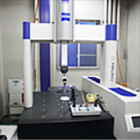Features of vacuum casting

By vacuum casting using silicone rubber, reproduction of prototypes with polyurethane and epoxy resins can be delivered precise, quick, and at low cost.
Vacuum casting applications
Vacuum casting material
Vacuum casting compatible size and delivery time
Number of replicates in vacuum casting
Vacuum casting process
-
Receiving product data and drawings, and production arrangement meeting
two-dimensional drawings and three-dimensional data can be provided, from which vacuum casting is based.

-
Production of master model by programming and CAD/CAM
Create 3D data optimized from CAD/CAM from original data and drawings. Create a master model from the created data.

-
Silicon type fabrication using unique method from master model
The master model is transferred to produce a silicon mold.

-
Replication, finishing and completion by vacuum casting
A vacuum casting machine is used to create a duplicate. Finishing touches are provided and vacuum casting is completed. After the master model is completed, it can be ready in as quick as three days.

-
Measurement and inspection using three dimensional measuring instruments
CNC 3D measuring machines are used to measure contours, and high-quality products and measurement data are delivered together.
Delivering peace of mind!
Inquiries about vacuum casting products
Vacuum casting enables precision plastic products such as urethane and epoxy resins to be delivered in a short time and at low cost.
If you can supply specifications in the form of drawings etc, Kyoei Design can provide a quotation with the optimal materials and machining method.
For precision casting products, please feel free to contact us at Kyoei Design.
Contact Us